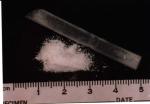teenage sex
We know that for centuries rapists have used alcohol as a means to sedate their victims in order to commit sexual assault. Today, rapists can choose a wide variety of substances to commit crimes of assault.
to sedate their victims in order to commit sexual assault. Today, rapists can choose a wide variety of substances to commit crimes of assault.
In recent years, survivors of sexual assault have been drugged by sedating substances, usually when slipped into a beverage. These drug related sexual assaults pose unique difficulties for both survivors and for those who are trying to reduce the risk. The general advice provided here is that any substance can be used to sedate women and men for the purposes of raping them.
Based on the information the authorities have about the use of these date rape drugs, we know that people of all ages are potentially vulnerable -- however, we also know that both sexual assault and high risk drinking occurs more amongst youth and young adults. We also know that both young women and young men have been drugged and sexually assaulted, and that women are more likely to be sexually assaulted, not only with rape drugs, but in other ways as well.
What exactly are date rape drugs?
Technically speaking, any substance that renders you incapable of saying "no" or asserting yourself and your needs can be used to commit rape.
This can include things like alcohol, marijuana or other street drugs, designer or club drugs like ecstasy, over-the-counter sleeping pills and antihistamines, even cold medications. However, the term "date rape drug" usually applies to the drugs Rohypnol, Gamma Hydroxy Butyrate (GHB) and Ketamine Hydrochloride.
continue story below
How date rape drugs work
Rape survivors generally report that they had consumed little or no alcohol and felt terribly inebriated. The next thing they remember is waking up with the knowledge of having survived a sexual assault. One can only imagine how frightening this may be for survivors. Imagine what it is like to wake up, knowing that you have been assaulted, but not being able to recall the details. The effect of many of the drugs is that they cause amnesia and unclear memories.
Police authorities report these date rape drugs (Rohypnol, Gamma Hydroxy Butyrate (GHB) and Ketamine Hydrochloride) are being used in bars, nightclubs, restaurants, parties, coffee shops, etc. One survivor recounted a story of being raped after being drugged on an airplane flight. Imagine how she felt when no one helped her, and she was incapable of preventing the assault.
What makes these date rape drugs so effective
The drugs are virtually undetectable; they are tasteless, odorless and colorless. All traces of the drugs leave the body within 72 hours of ingestion and are not found in any routine toxicology screen or blood test - doctors and police have to be looking specifically for them and they have to look quickly! Date rape drugs are easily slipped into drinks and food and are very fast acting. They render the victim unconscious but responsive with little or no memory of what happens while the drug is active in their system. The drugs also make the victim act without inhibition, often in a sexual or physically affectionate way. Like most drugs, date rape drugs render a person incapable of thinking clearly or of making appropriate decision. This makes for a very passive victim, one who is still able to play a role in what is happening but who will have no clear memory of what happened after-the-fact. Without any memory of events the victim is often unaware that they have even been raped, and if they are aware or have suspicions they make very poor witnesses.
How do you know if someone has used a date rape drug on you?
It is difficult, but not impossible to know. First, there are some very clear signs that sexual activity has taken place even if you have no memory of actually "doing it." (It is important to note here that if you have had sex but can not remember doing it or offering consent you have been raped under the law, whether a date rape drug has been used or not.) Signs that a sexual assault has taken place can include; soreness or bruising in the genital area, soreness or bruising in the anal area, bruising on the inner and/or outer thighs, bruising on the wrists and forearms, defensive bruising or scratching (the kind that would occur during a struggle), used condoms near you or in nearby garbage containers, and traces of semen or vaginal fluids on clothes, body or nearby furniture.
Since people who have been slipped a date rape drug appear to others to be very intoxicated, an extremely reliable sign that you have been raped using a date rape drug is gossip from others about your behavior or the behavior of those around you. Aside from indications of sexual activity, other clues that a date rape drug may have been given to you include:
- feeling "hung-over" despite having ingested little or no alcohol
- a sense of having had hallucinations or very "real" dreams
- fleeting memories of feeling or acting intoxicated despite having taken no drugs or drinking no alcohol
- no clear memory of events during an 8 to 24 hour period with no known reason for the memory lapse
- and stories from others about how intoxicated you seemed at a time when you know you had taken no drugs, medications or alcohol
Short of being told that you have been given a date rape drug, there is no way to be sure without medical testing. If you suspect that you have been given a date rape drug you need to get to a hospital quickly and you must request that you be properly tested. The drugs can be found in your system if you act quickly. If you suspect that you have been raped using any one of these drugs go to a hospital and request a preliminary rape exam with testing for date rape drugs. This is the only way to know for sure.
How Can You Protect Yourself from Being a Victim of a Date Rape Drug?" />
How can you protect yourself from being a victim of a date rape drug?
The introduction of date rape drugs into mainstream culture has put a very powerful weapon in the hands of sexual predators. Rapes can be easily committed behind a foggy haze of intoxication often leaving the rape victim oblivious to the fact they have been assaulted. It is a frightening thought that begs the question: "What, if anything, can be done to stop a person from falling victim to a rape using a date rape drug?" There are some simple behavior modifications you can make to ensure that you do not fall prey to a rapist armed with a date rape drug. To protect yourself always follow these simple rules:
- Don't accept drinks from other people.
- Open containers yourself.
- Keep your drink with you at all times, even when you go to the bathroom.
- Don't share drinks.
- Don't drink from punch bowls or other large, common, open containers. They may already have drugs in them.
- Don't drink anything that tastes or smells strange. Sometimes, Gamma Hydroxy Butyrate (GHB) tastes salty.
- Have a non-drinking friend with you to make sure nothing happens.
- Keep your eyes and ears open; if there is talk of date rape drugs or if friends seem "too intoxicated" for what they have taken, leave the party or club immediately and don't go back!
If these behavior modifications don't feel like enough protection, or if you don't think you can follow these rules on a given night, you do have another option. There is a new defense against date rape drugs that has recently been approved for use in North America; it is a simple and inexpensive test kit that can be used to detect the presence of date rape drugs in drinks. The so-called "Drink Safe Technology" is actually a package of drink testing strips or coasters that work like those litmus paper strips you use in chemistry class. The strips and coasters change color when they come in contact with a date rape drug. The strips fit in your purse or pocket and can be used quickly and discretely. To find out more about "Drink Safe" visit the website at http://www.drinksafetech.com.
continue story below
If you think that you have been drugged and raped:
- Go to the police station or hospital right away.
- Get a urine (pee) test as soon as possible. The drugs leave your system quickly. Rohypnol leaves your body 72 hours after you take it. Gamma Hydroxy Butyrate (GHB) leaves the body in 12 hours.
- Don't urinate before getting help.
- Don't douche, bathe, or change clothes before getting help. These things may give evidence of the rape.
- You also can call a crisis center or a hotline to talk with a counselor. One national hotline is the National Domestic Violence Hotline at 800-799-SAFE or 800-787-3224 (TDD). Feelings of shame, guilt, fear and shock are normal. It is important to get counseling from a trusted professional.
GHB (Gammahydroxybutyrate)
GHB is used in some countries as a general anesthetic, treatment for insomnia, treatment for alcoholism, an aid in childbirth by increasing the strength of contractions and decrease in pain, and assists in dilation of cervix.
The street names for GHB are: Easy Lay, EZ Lay, Liquid Ecstasy, Ellie, Clear X, Liquid X, X-rater, XTC, Chemical X, Liquid Dream, Scoop, Scoop Her, Get-Her-to-Bed.
GHB is an odorless, colorless, liquid that acts on the central nervous system as a depressant/anesthesia. It looks exactly like water. It was banned in the United States in 1990 under the Samantha Reid Date-Rape Prohibition Act of 2000. It is also illegal in Canada and many parts of Europe. It is not produced or manufactured by any pharmaceutical company; instead it is made in illegal drug labs or by amateur chemists in their homes. It can be easily made with common and readily available ingredients and novice chemistry skills and the recipe is easy to find. Making, possessing and/or using this drug is illegal.
GHB is used as a recreational drug often at Rave parties and offers an alcohol and hangover free high
GHB can cause these problems:
- euphoria
- amnesia
- intoxication
- dizziness
- visual hallucinations
- enhances state of relaxation, desire, enjoyment, and decreases inhibitions
- problems seeing
- unconsciousness (black out)
- problems breathing
- dream-like feeling
- coma
- death
GHB begins to take effect 10 - 15 minutes after ingestion. The effects last for 3 - 6 hours when taken without alcohol and 36 - 72 hours when mixed with alcohol or other drugs. In very high dosages unconsciousness, or even coma, can occur within 5 minutes.
Ketamine Hydrochloride
Ketamine is a legal drug sold as a veterinary sedative or hospital grade anesthesia and goes by the brand names Ketaset® or Ketalar®. It is in the same family of drugs as PCP or angel dust (phencyclidine). When used in humans, the drug acts as a dissociative anesthesia; it renders the user vaguely aware of, but comfortably detached from, all bodily sensations.
 In undiluted form it looks like an off-white powder, in diluted form it looks like slightly cloudy water.
In undiluted form it looks like an off-white powder, in diluted form it looks like slightly cloudy water.
The street names for Ketamine are: Special K, Super K, K, OK, KO, Vitamin K, Kid Rock, Ket Kat, Make-Her-Mine.
Ketamine can cause these problems:
- has a dissociative action, type of out of body experience, yet conscious
- loss of grasp with primary senses - distorted perceptions of sight and sound
- feelings of peace, detachment from body, enter a type of transitional world of darkness, leading to a near death type of experience
- often causes those under influence to feel connected to emotionality
- loss of memory, includes amnesia, hallucinations
- patients state they are awake but paralyzed
- can cause violent reactions in some who take the drug in excessive amounts, with aggressive displays, impaired self control, hallucinations and other toxic side effects such as nausea and vomiting
- problems breathing
- dream-like feeling
- coma
- death
When taken orally or nasally (snorted), the effects of Ketamine take 10 - 20 minutes to be realized. When taken intravenously the effects are instantaneous. The effects last less than 3 hours and the drug is detectable in the system up to 48 hours depending on the method of ingestion. Since it is often mixed with other mind-altering drugs, like heroin and cocaine, many people do not ever realize they have been given this substance.
continue story below
These date rape drugs are sometimes used to assist in a sexual assault. Sexual assault is any type of sexual activity that a person does not agree to. It can include inappropriate touching, vaginal penetration, sexual intercourse, rape, and attempted rape. Because of the effects of these rape drugs, victims may be physically helpless, unable to refuse sex, and can't remember what happened. The date rape drugs often have no color, smell, or taste and are easily added to flavored drinks without the victim's knowledge. There are at least three date rape drugs:
Rohypnol (flunitrazepam)
Rohypnol is a prescription sedative/depressant belonging to the Benzodiazepine family of drugs used as a powerful sedative or sleeping medication. Similar drugs in this family are Valium and Halcion.
The street names for Rohypnol are: Rophy, Ruffles, Roofies, Ruffies, Ruff Up, Rib, Roach 2, R2, R2-Do-U, Roche, Rope, Ropies, Circles, Circes, Forget It, Forget-Me-pill, Mexican Valium.
This drug is not manufactured or approved for use in North America but can be found as a street drug. Rohypnol is a pill and dissolves in liquids. New pills turn blue when added to liquids. However, the old pills, with no color, are still available. The tablet is white and looks slightly smaller than an aspirin and may be packaged in bubble wrap, which gives it a false sense of safety or legality.
The effects of Rohypnol can be felt within 20-30 minutes of ingestion with the strongest effects felt within one to two hours. The effects may last up to 8 hours. Mixed with alcohol, the effects last longer, up to 36 hours. After ingestion it can be found in the blood stream for 24 hours and in urine samples for 48 hours.
Rohypnol can cause these problems:
- can't remember what happened while drugged
- sleepiness
- muscle relaxation or loss of muscle control
- drunk feeling
- problems talking
- difficulty with motor movements
- loss of consciousness
- confusion
- problems seeing
- dizziness
- lower blood pressure
- nausea, stomach problems

The pills are small and white with a split-pill line on one side and the word "ROCHE" with the number 1 or 2 in a circle stamped on the other. They are quickly dissolved in liquid especially when crushed first.
next: Dating an Older Guy
 On the Internet, you can conceal your real name, age, occupation, appearance, and your physical responses to anyone or anything you encounter on-line. Internet users, especially those who are lonely and insecure in real-life situations, take that freedom and quickly pour out their strongest feelings, darkest secrets, and deepest desires. This leads to the illusion of intimacy, but when reality underscores the severe limitations of relying on a faceless community for the love and caring that can only come from actual people, Internet addicts experience very real disappointment and pain.
On the Internet, you can conceal your real name, age, occupation, appearance, and your physical responses to anyone or anything you encounter on-line. Internet users, especially those who are lonely and insecure in real-life situations, take that freedom and quickly pour out their strongest feelings, darkest secrets, and deepest desires. This leads to the illusion of intimacy, but when reality underscores the severe limitations of relying on a faceless community for the love and caring that can only come from actual people, Internet addicts experience very real disappointment and pain.
 Searches of the literature yielded 1,624 titles, of which 294 were selected to review; the latter included meta-analyses, clinical trials, and reports that contained supplemental information on SAMe. Ninety-nine articles, representing 102 individual studies, met the screening criteria. They focused on SAMe treatment for depression, osteoarthritis, or liver disease and presented data from clinical trials on humans. Of these 102 studies, 47 focused on depression, 14 focused on osteoarthritis, and 41 focused on liver disease (all conditions).
Searches of the literature yielded 1,624 titles, of which 294 were selected to review; the latter included meta-analyses, clinical trials, and reports that contained supplemental information on SAMe. Ninety-nine articles, representing 102 individual studies, met the screening criteria. They focused on SAMe treatment for depression, osteoarthritis, or liver disease and presented data from clinical trials on humans. Of these 102 studies, 47 focused on depression, 14 focused on osteoarthritis, and 41 focused on liver disease (all conditions). to sedate their victims in order to
to sedate their victims in order to  In undiluted form it looks like an off-white powder, in diluted form it looks like slightly cloudy water.
In undiluted form it looks like an off-white powder, in diluted form it looks like slightly cloudy water.